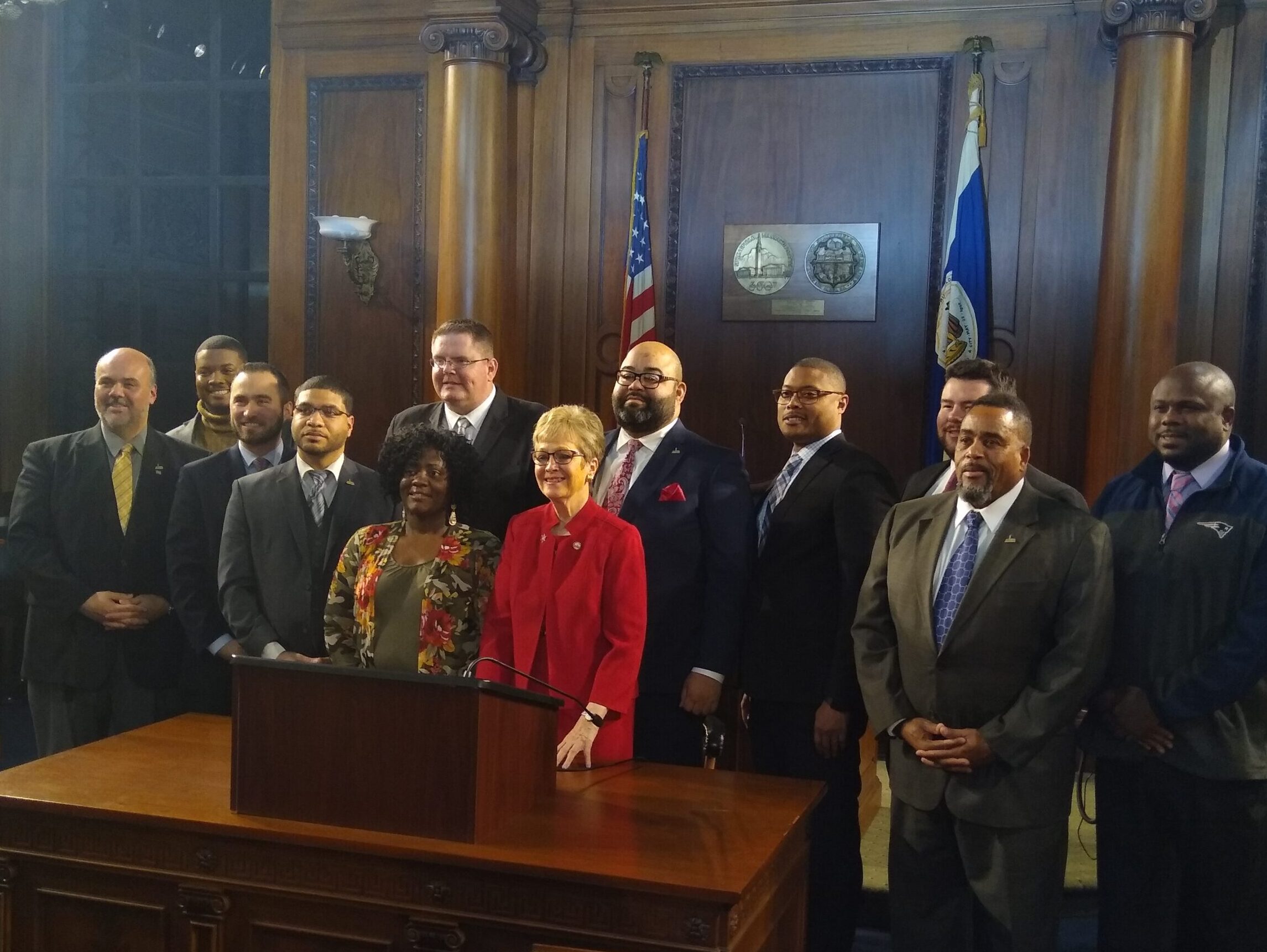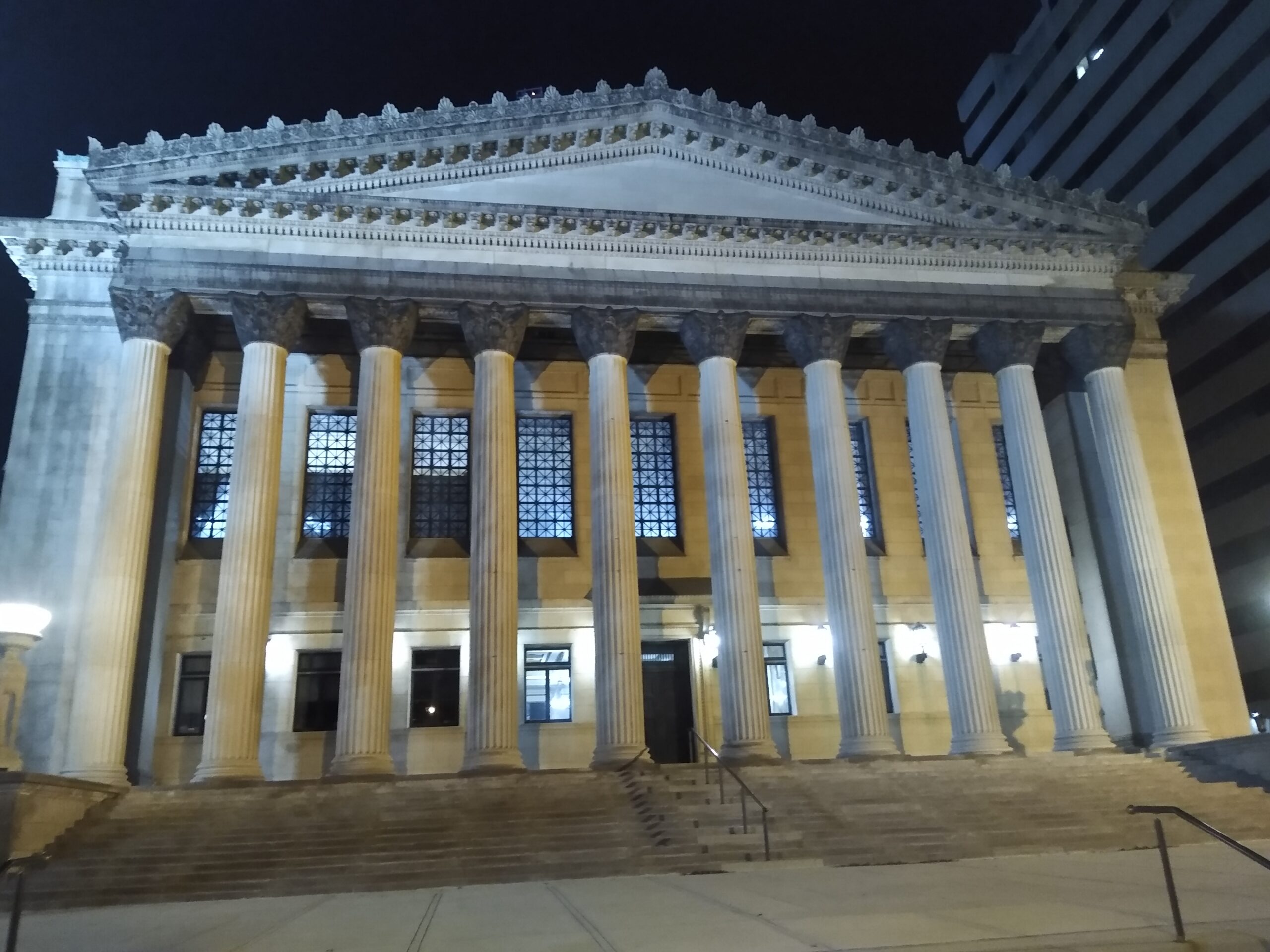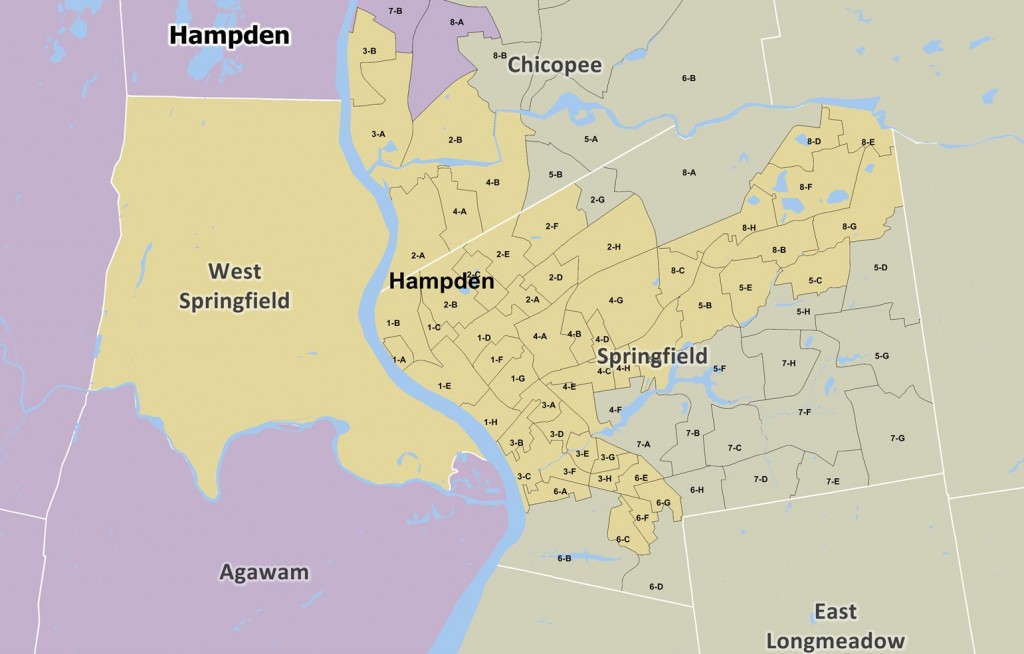Analysis: Springfield City Council Now a Viable Political Launchpad…
With Tuesday’s results, one thing is now clear: the Springfield City Council is not a terminal space for political ambition. There were signs this legacy was ending for years, but it was a slow drip countered by evidence that councilors could not rise. With Ward 1 Councilor Adam Gomez and Ward 8 Councilor Orlando Ramos winning their respective Democratic primaries for the Hampden Senate district and 9th Hampden state rep district, the floodgates may have opened.
Hard work, timing and luck remain critical factors in state legislative campaigns’ success. However, Gomez and Ramos’ victories suggest the Council is credibly culturing pols that voters will elevate to higher office. In the decade since ward representation began, the Council has become more active and assertive as a legislative body.
“I’ve been part of one of the most productive city councils we’ve seen in some time,” Ramos said in an interview. “We challenged the status quo and we got things done.”
While Gomez and Ramos do not seem keen about resigning their Councils seats before those terms expire next year, their departure will continue a slow-running retirement-driven shakeup on the body. In 2017 two at-large councilors—among them now-Rep Bud Williams—retired. The following year two ward seats opened. Now open contests will likely happen in wards 1 and 8.
The Council’s Sarno-skeptic supermajority has strained under internal conflicts, both personal and political, hampering its productivity. Still, the last six years has seen the Springfield municipal legislature rise to an importance the city has likely not seen since the 1980s.
For the most part, voters in municipal elections are not voting on policy. Since so few votes decide city elections, constituent services are the paramount concern. Though policy can land a councilor in hot water, if a councilor is responsive, city voters will tolerate all but the most outlandish policy.
But policy may provide ambitious pols a platform on which to build.
That could explain why earlier candidates for higher office from the City Council were unsuccessful. Assuming they had good reputations for constituent services, councilors were largely ciphers to voters. If anything, stereotypes about politicians worked against them. The lone exception was councilors who ran for mayor. Excluding Charles Ryan and William Sullivan, all mayors in the last 50 years had been councilors beforehand.
Williams won election to the 11th Hampden District, anchored in the city’s historically Black community, as a sitting at-large councilor in 2016. Before him, only one councilor in recent memory had won election to the legislature. In 2006, councilor Angelo Puppolo won the 12th Hampden House seat but he faced token opposition in the primary. His opponents since have been in the general election, including in 2006. Despite the inclusion of generally Republican Wilbraham, the Springfield arm of Puppolo’s district has kept his seat safely Democratic.
Rep Jose Tosado, whose retirement cleared the way for Ramos’ state House bid, had also been a councilor. However, his run for state rep came three years after he departed the Council to run for mayor.
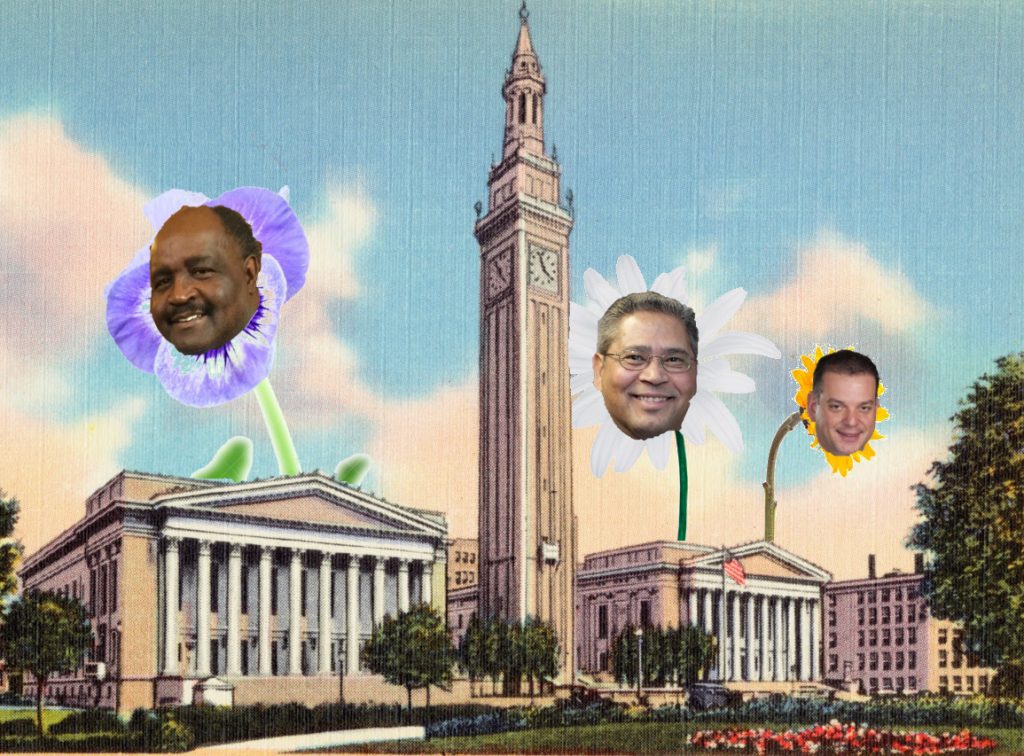
A new Springtime for Springfield politicians. (created via wikipedia, legislative photos and Facebook)
In short, Puppolo and Williams’s victories were rarities. Three incumbent city councilors, Councilor Timothy Allen, Melvin Edwards and Kateri Walsh, sought higher office. None succeeded. Those before them fared no better.
These bids predated the rise in the Council’s station. As Council President, Ward 2 Councilor Michael Fenton led the body to a more relevant place in municipal discussions, especially on legislation. While stylistically different, this has largely continued through Ramos’ presidency and into at-large Councilor Justin Hurst’s turn at the Council’s helm.
The central impetus for this change is not necessarily Fenton but ward representation. Moving from an all at-large nine-member body to a 13-member body with five at-large members and one from each of the city’s eight wards altered the political arithmetic. Because the city’s older, whiter and more conservative voters could dominate the at-large setup, activist legislation was less common. Ward representation diluted this effect, yielding more liberal councilors—or at least councilors willing to listen to their diverse colleagues—even in whiter and/or conservative wards.
“I think there is no doubt that the Council has become more active legislatively and also more active on the community level because of ward representation,” said at-large Councilor Jesse Lederman.
Ramos concurred. He said that having councilors from across the city, instead of only a few neighborhoods, broadens understanding of the challenges.
“Having that sort of diversity, geographic diversity, really helped bring more issues to City Hall,” he said.
Indeed, Ramos touted initiatives to bring accountability to the police and civil liberties in his campaign for state rep. He had actual legislation he could point to and pitch to 9th Hampden voters.
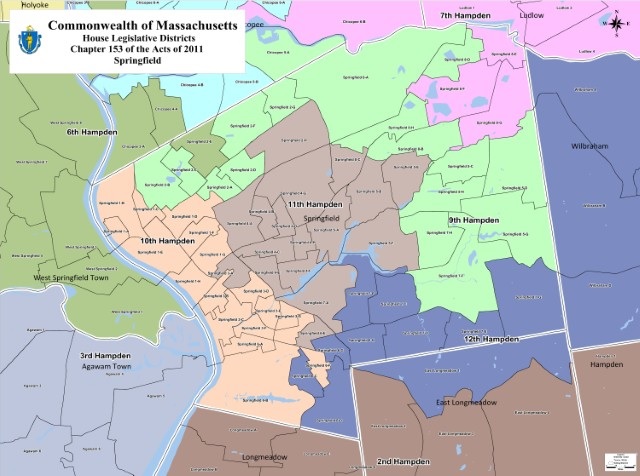
The 9th Hampden District (in bright green) snakes across the city. The 11th Hampden is in brown and 12th Hampden is in violet. (via malegislature.gov)
“That really prepared me for this race and prepared me to be a state representative,” he added.
By comparison, when Allen and Edwards ran for state senate in 2012 and 2014 respectively, they had fewer legislative initiatives to tout. It took years for the ward representative Council to realize its legislative potential.
What legislation they had passed by this time did not animate voters, especially in districts that extend beyond Springfield itself.
Today is different. While the specter of Donald Trump has a hand in this, it is not hard to imagine the city’s Welcoming Communities Trust ordinance resonating with non-Springfield voters today. However, such an ordinance would have likely been impossible under the all at-large Council. During the infancy of the Ward-based Council with nine new members it would have been difficult.
Ultimately though, what voters want is results. It does not have to be legislation either. Lederman, who endorsed Gomez in his race but remained neutral in the 9th Hampden race, pointed to his runs for Council as example. As a candidate, Lederman ran on his community activism and work with the Council from the outside.
“The production of legislation on the local level is helpful, but that doesn’t mean it is superior to other evidence,” he said.
Still, a more productive Council gives voters more to consider when a councilor seeks higher office.
The state of the Council may lend itself toward upward exits, though. Even before COVID-19, there was some frustration brewing about the limits of the Council’s power. Gomez had briefly run for Senate in 2018 and Ramos ruminated about running for mayor last year. Coronavirus-imposed remote hearings have only added to the lawmaking obstacle course in Springfield.
Neither have made a firm declaration, but it seems likely both will serve out their Council terms. Because both were unopposed in 2019, no runner-up exists to take their seats per the city charter. Instead, the remainder of the Council would make the selection. They would likely prefer to have voters choose their replacements in next year’s election.
Whoever succeeds them could affect the body’s course going into the 2023 mayoral election. Their replacements could change the balance of power politically and demographically.
Gomez’s ward, weighted toward the heavily Latino North End, will probably elect another person who is Hispanic. Despite growing numbers from elsewhere in Latin America, especially the Dominican Republic, those with ties to Puerto Rico dominate Springfield’s Latino population including in the North End.
Springfield’s Latinos are not remotely monolithic, though. Gomez has an establishment Latino pedigree—his father Gumersindo is well-respected for his work on veterans’ issues. However, the younger Gomez has drawn support from community activists who have clashed with insider-y entities like the New North Citizens Council. His predecessor Zaida Luna never had establishment Latino support. Despite a proclivity for boat-rocking, he never lost this backing. Depending on the camp from which Gomez’s successor hails, that person could affect the Council’s direction.
Ramos’ ward is more of a demographic grab bag. It includes parts of East Springfield and Pine Point and the Boston Road and Indian Orchard neighborhoods, areas that have long felt City Hall ignores them. This sentiment is so prominent it became a feature of Ramos’ House campaign. The ward could easily elect a councilor of any persuasion—Ramos’ predecessor John Lysak was white and occasionally Republican.
With no clear poles of power—Ramos lives in Pine Point, but has his deepest support in Indian Orchard, which is largely not in the 9th Hampden—the fight to succeed him could be particularly impactful on the Council.
